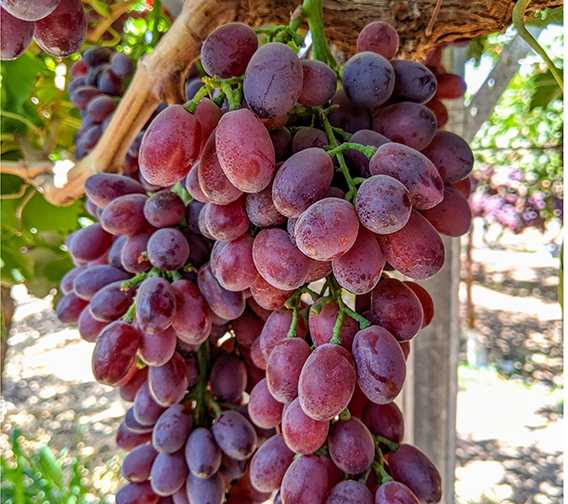Test Blocks Of Stone Fruit — Great For New Cultivars Or Systems

Some messages are worth hearing more than once — especially if we didn’t “get it” the first time or if it has been a long time since we heard it. As I looked back 42 columns ago to my first “Stone Fruit” column in January 2005, I was thinking to myself, “Does the topic of ‘test blocks’ bear repeating for all tree fruit growers? I believe it does!
Whether you are considering new cultivars and/or rootstocks, training systems, tree densities, or other management practices, it is wise to do some small-scale, in-house testing and research on your own before taking the plunge to establish large, new commercial blocks. This is particularly critical for new cultivars for which there may be no performance history at or near your specific location (i.e., latitude, altitude, chill hours, soil type, etc.). Following are some suggestions on setting up a test block that can help you to learn on a scale in which mistakes can more safely be made. Realize that there are costs of time and money for such endeavors but this is a learning investment for the long term.
Step One: Determine Your Goal
What question(s) do you want answered when the test is over? How long are you willing to wait to get the results? The test may be as simple as comparing the “latest and greatest” new fruit cultivars in a particular ripening season to see if any perform better than your accepted standard for that time frame. Or it may be very complex, where you are examining different training systems, tree densities, and rootstocks, and you want the best combination for long-term profitability. I suggest that you don’t bite off more than you can chew.
Step Two: Do Your Homework Ahead Of Time
Consult with Cooperative Extension agents/specialists and university researchers in your state or region. Seek out and review research-based resources to narrow your choices and hone your plan. Consider inviting a university cooperator to participate with you. Talk with other farm managers/growers in the region and attend educational meetings to learn more. This can include out-of-state (or even out-of-country) opportunities like tours through the International Fruit Tree Association or other organizations.
Step Three: Have All Materials In Place
Make prearrangements for your materials to be available at planting time (trees, trellis materials, other supplies, etc.). Don’t buy or use small, runted-out trees, or poorer quality materials than you would use elsewhere on the farm to save money. If you are doing a variety trial block to compare new types, don’t forget to compare these with established “standards” from your own farm in the same test block (trees same age, planted same time, etc.). In fact, consider budding off your own trees to establish the “standards” that you would interplant for side-by-side comparison purposes. It is extremely helpful. This does assume that such propagation does not result in an intellectual property violation with the nursery.
Step Four: Choose A Good Location
This is a site that is well-suited for fruit growing with good air and soil drainage, uniform soil type, access to water, etc. You want to minimize the environmental variables so that you don’t confound what you are trying to observe. The site needs to be in a location that will allow you or your farm manager to pass it at least weekly during the growing season so that you can make observations and collect data.
Step Five: Prepare And Establish The Site
Follow your normal preplanting site preparation practices just like it was a new commercial block going in. Care for the orchard with standard operating practices (pruning, thinning, pest/disease control, etc.), again to minimize variability.
Step Six: Keep Records
Get a good notebook (paper, iPad, etc.) to collect data and start recording. Create and include a full plot map with landmarks so that each individual tree is identified. Record observations, take representative photos, keep good records of labor required, etc. Review findings annually and determine how long you will continue until your goal is achieved. What decisions will you make now that you have this information?
As a researcher, I tend to be more conservative about these types of studies than growers often are. For example, the economic decision to topwork over or replant an orchard to a redder strain of cultivar X or an earlier strain of cultivar Y may be made more quickly by the grower than I would recommend. I typically like five years of production data for such studies. Year-to-year variation can be considerable for important reasons, and it takes time to document consistency of performance. Another thing that I have observed many times over the years in grower “tests” is that growers often don’t leave a proper untreated “control” or “standard” to make comparisons with. In some cases, this may be trees that were not sprayed with snake oil #1. This is often a fatal flaw. Always leave some trees that are not treated or that function as a standard so that proper comparisons can be made.
If I can assist you as you consider putting in a “test block.” don’t hesitate to contact me. For more details on establishing a variety test block, an archived version of my first American Fruit Grower “Stone Fruit” column can be found at: www.clemson.edu/extension/peach/afg_columns/establishing_a_variety_test_block.html.










